
| Home | Chinatowns of the world | Festivals | Culture | Food Culture | History | Countries |
| Chinese Religion | Tours | Sitemap | Documentaries | About | Contact |
Green Lion 青狮 Watch the green lion in action:
|
|||||
Green lion performance in Singapore (L) and Vietnam (R) |
|
Green lion, sounds similar to Qing army 清师 and when fitted with blades, it symbolized the Manchurian army. Its ferocious look was a reminder of the devastation that occurred during the Qing conquest of Southern China.
During training sessions, the Green lion is a moving target for trainees and became the physical manifestation of Manchurian aggressiveness to stimulate trainees. Contemporary Green Lion performance gives an idea how the training may have looked like.
After the fall of Qing dynasty in 1912, martial arts expert Mr. Gan De Yuan 干德源 is said to have organized a performance in Quanzhou 泉州where the Green Lion was dismembered to represent the overthrow of the Qing dynasty. From that point onwards, the Green Lion is used without the blades and function as a form of physical training. The performance of Green Lion fulfills cultural and ritual purposes. See Green Lion performance during Mid Autumn celebration in Cholon, Ho Chi Minh Chinatown in Vietnam.
What is the degree of historical validity in this story and if true, how was this symbolism transmitted since the early Qing dynasty?
Historical background
In 1644, the Ming dynasty was overthrown by a rebel army led by Li Zi Cheng 李自成. As the rebel army moved towards the Forbidden City, the Ming Emperor Chong Zhen 崇祯皇帝 hung himself at the Coal Hill marking the end of Ming dynasty. In the ensuing chaos, the Manchurians invaded China and established their control over Northern China.
Meanwhile, Ming princes established resistance centers in Southern China known as the Southern Ming 南明. From 1645 to 1646, Ming prince Zhu Yujian 朱聿鍵, the Prince of Tang 唐王, was declared Emperor LongWu 隆武 and used Fuzhou,福州, the capital of Fujian province as his anti Qing base.
Emperor Longwu was defeated in October 1646 and executed in Fuzhou. His supporter, local warlord Zheng Zhilong 郑芝龙, surrendered to the Qing army but his youngest son Zheng Chenggong 郑成功continued the resistance movement.
Zheng Chenggong used Amoy and Taiwan as his base to launch expeditions against the Manchurians. This movement ended in 1683 when the Manchurians captured Taiwan.
Although Ming resistance occurred in other parts of China, the movement in Fujian was the longest stretching over a period of 38 years.
The resistance movement created major problems for Fujian inhabitants. In an attempt to isolate Zheng Cheng Gong after his retreat to Taiwan, the Manchurians moved costal populations of Jiangsu 江苏, Zhejiang 浙江, Fujian 福建and Guangdong 广东provinces inland. These policies created massive upheaval for the uprooted population.
On the other hand, the resistance movement probably symbolized hope whenever the general population was unable to resist unpopular orders. One of the most resented policies was the hair and dress regulation introduced unsuccessfully in 1644 and imposed again in 1645.
It required all males to shave their forehead and to fashion the hair into a queue. This practice violated Confucian and cultural values and created resentment towards the Qing authority. The slogan “overthrow the Qing to restore the Ming "反清复明" continued throughout the Qing dynasty.
Throughout Qing rule, discussion of Ming resistance resulted in imprisonment or banishment. The Qing government also attempted to impose strict censorship over the empire. During the reign of Emperor Kangxi 康熙, there was an index of proscribed works. From 1774 to 1789, Emperor Qianlong 乾隆launched the literary inquisition where works deem critical of Manchurians or the dynasty were destroyed or censored.
This historical background created conditions likely for Green Lion performance as symbolic political resistance and the transmission of that political stand. Due to the sensitiveness of the subject and its penalty, the Green Lion’s anti Qing symbolism is unlikely to have been transmitted through written records.
So while there is circumstantial evidence to support the Green Lion as an act of political resistance, further evidence from archeological sources or indirect text references will be useful.
In any case, the continuation of this art form serves an opportunity for physical training and its founding story serves as avenue for students to learn about a turbulent period of Chinese history.
Related articles:
Lion dance 舞狮
Qilin dance
Table of dynasties
Mr. Gan De Yuan 干德源
Ming dynasty remembered, 思明
Other stories from the Ming Dynasty
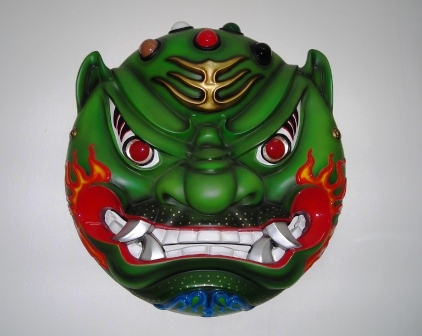
Green lion mask
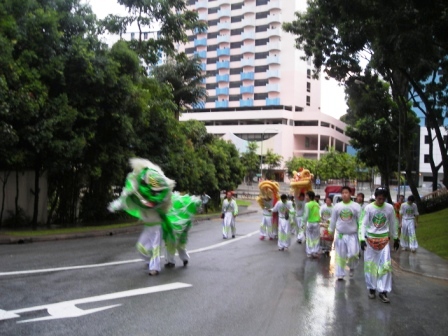
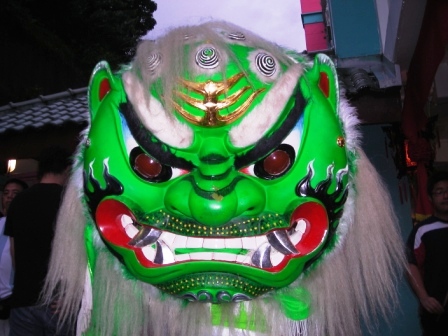
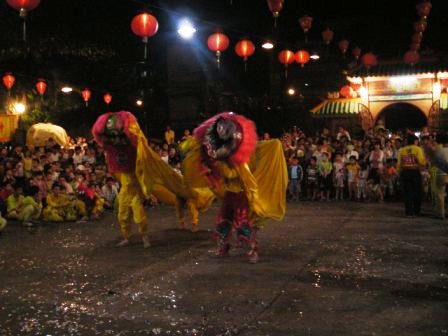
Green Lion performance in Cholon, Ho Chi Minh Chinatown
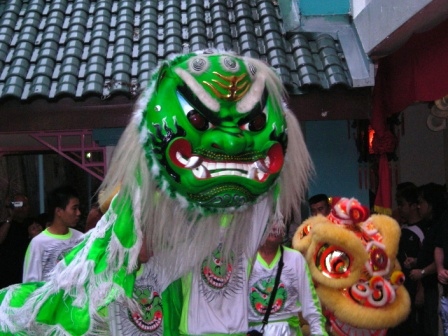

sparing with the green lion, Singapore

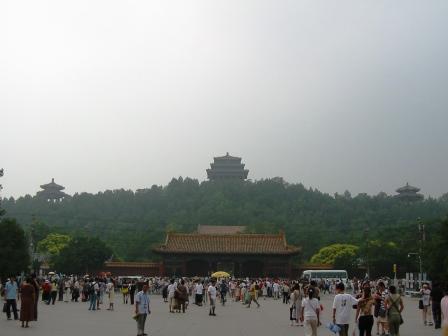
Coal hill where Emperor Chong Zhen committed sucide
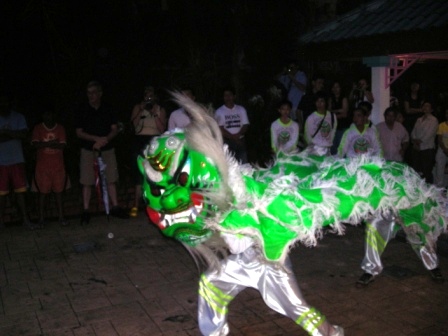

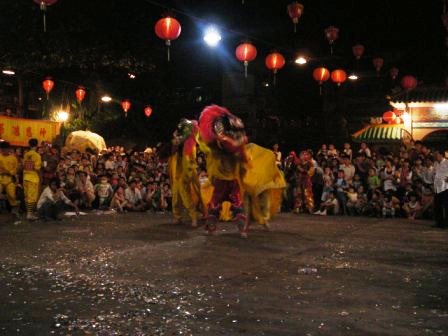
| Join us on | Youtube | |||
| Copyright © 2007-24 Chinatownology, All Rights Reserved. | ||||
 Green Lion 青狮 is a
Green Lion 青狮 is a